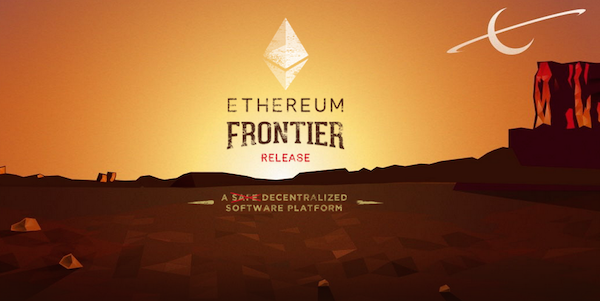8 Most Crowdfunded Campaigns In History
Nathan Johnson
Published
09/08/2015
ideas that just took off
- List View
- Player View
- Grid View
Advertisement
-
1.
 The most funded campaign in the history of crowdfunding belongs to a multiplayer online game called Star Citizen. In 2012, Star Citizen's initial fundraising goal on Kickstarter was $500,000. After the campaign ended, funding has continued through the game's website. As of August 2015, it has surpassed a whopping $88 million. However, more than 1,200 people who backed Star Citizen have now changed their minds. A fully formed beta version was supposed to be released by the end of 2014, but won't be out until at least 2016. What gives? David Swofford, a spokesman for Cloud Imperium Games, says no one has ever attempted a game with such a massive scope. Typically, a team developing something of this magnitude would take its lump sum of money behind closed doors and spend years creating the game it wanted. Because it was crowdfunded, Star Citizen can't do that. Cloud Imperium Games must be open and forthcoming with its players—all of whom are also investors. In the meantime, the team is working to develop pieces of the game to keep buyers happy until the finished product is released, which Swofford says will be sometime next year. The spaceship combat is available now. The social module will release sometime soon, and the first-person shooter section is due out in a few weeks. And if you really want your money back? Swofford says anyone is entitled to a refund within two weeks of purchase with no questions asked. After that, Cloud Imperium Games reviews each refund request. The developer is under no legal requirement to issue a refund after 14 days, as its terms of service clearly indicate that players are investing in a product, not just buying it.
The most funded campaign in the history of crowdfunding belongs to a multiplayer online game called Star Citizen. In 2012, Star Citizen's initial fundraising goal on Kickstarter was $500,000. After the campaign ended, funding has continued through the game's website. As of August 2015, it has surpassed a whopping $88 million. However, more than 1,200 people who backed Star Citizen have now changed their minds. A fully formed beta version was supposed to be released by the end of 2014, but won't be out until at least 2016. What gives? David Swofford, a spokesman for Cloud Imperium Games, says no one has ever attempted a game with such a massive scope. Typically, a team developing something of this magnitude would take its lump sum of money behind closed doors and spend years creating the game it wanted. Because it was crowdfunded, Star Citizen can't do that. Cloud Imperium Games must be open and forthcoming with its players—all of whom are also investors. In the meantime, the team is working to develop pieces of the game to keep buyers happy until the finished product is released, which Swofford says will be sometime next year. The spaceship combat is available now. The social module will release sometime soon, and the first-person shooter section is due out in a few weeks. And if you really want your money back? Swofford says anyone is entitled to a refund within two weeks of purchase with no questions asked. After that, Cloud Imperium Games reviews each refund request. The developer is under no legal requirement to issue a refund after 14 days, as its terms of service clearly indicate that players are investing in a product, not just buying it. -
2.
 You wouldn't think there would be that many people who wanted to harvest their own honey, but the Flow Hive has raised over $12 million on Indiegogo. The Flow's newfangled contribution to the ancient practice of beekeeping is a plastic frame that serves as a template for the bees to build the cells of their honeycombs. When the combs are full, which the beekeeper can confirm by looking through little windows, the beekeeper turns a lever to crack them lengthwise down the middle. The golden nectar flows into a channel and then out of the hive through tubes. On their Indiegogo page, inventors Stuart Anderson and his son Cedar call this "honey on tap." Professional beekeepers are divided over the Flow Hive. Some point out that by simplifying the most difficult part of beekeeping—the harvest—the Flow may draw more people into the hobby, and thus raise awareness of the honeybee die-off. If that leads to greater advocacy to protect and possibly restore honeybee populations, the argument goes, then the Flow is a force for good. However, some argue that the Flow makes the harvest too easy, placing the emphasis on production rather than more painstaking and time-consuming tasks such cleaning and maintaining the hive and protecting bee colonies from deadly pests. Those tasks can take years to perfect, and critics of the Flow say that the system will promote slipshod beekeeping, which is potentially fatal to colonies. The Flow Hive will be available for purchase as of February 2016. Models will range in price from $260-$670.
You wouldn't think there would be that many people who wanted to harvest their own honey, but the Flow Hive has raised over $12 million on Indiegogo. The Flow's newfangled contribution to the ancient practice of beekeeping is a plastic frame that serves as a template for the bees to build the cells of their honeycombs. When the combs are full, which the beekeeper can confirm by looking through little windows, the beekeeper turns a lever to crack them lengthwise down the middle. The golden nectar flows into a channel and then out of the hive through tubes. On their Indiegogo page, inventors Stuart Anderson and his son Cedar call this "honey on tap." Professional beekeepers are divided over the Flow Hive. Some point out that by simplifying the most difficult part of beekeeping—the harvest—the Flow may draw more people into the hobby, and thus raise awareness of the honeybee die-off. If that leads to greater advocacy to protect and possibly restore honeybee populations, the argument goes, then the Flow is a force for good. However, some argue that the Flow makes the harvest too easy, placing the emphasis on production rather than more painstaking and time-consuming tasks such cleaning and maintaining the hive and protecting bee colonies from deadly pests. Those tasks can take years to perfect, and critics of the Flow say that the system will promote slipshod beekeeping, which is potentially fatal to colonies. The Flow Hive will be available for purchase as of February 2016. Models will range in price from $260-$670. -
3.
![Hiral Sanghavi needed just $20,000 to fund his BauBax travel jacket. He smashed that target and raised a whopping $9 million on Kickstarter.
The campaign for the jacket with 15 built-in features was launched on July 7, 2015. Sanghavi had 58 days to meet the goal but got there in just five hours.
The jacket comes in four styles (windbreaker, hoodie, blazer and bomber) and is designed with multiple hidden functions to make commuting more comfortable and hands-free. Those include a neck pillow that inflates in two seconds, an insulated cup holder pocket and gloves concealed in each sleeve.
Sanghavi's lifestyle inspired his wife, a designer to create the jacket. "She works on the West Coast, and I'm studying for my MBA at the Kellogg School of Management [at Northwestern University in Illinois]," he said. "It's a long flight, and I'd (always) forget to take my neck pillow and (have to) buy a new one at the airport."
He accumulated a few pillows this way, prompting his wife to suggest a jacket with a built-in pillow. "I thought it was a solid idea," said Sanghavi. They eventually added the other features.
Sanghavi, 29, said the campaign resulted in 45,000 backers who ordered 70,000 jackets that are priced between $89 - $120. He expects to ship those in November 2015.](https://cdn.ebaumsworld.com/mediaFiles/picture/604025/84727596.jpg) Hiral Sanghavi needed just $20,000 to fund his BauBax travel jacket. He smashed that target and raised a whopping $9 million on Kickstarter. The campaign for the jacket with 15 built-in features was launched on July 7, 2015. Sanghavi had 58 days to meet the goal but got there in just five hours. The jacket comes in four styles (windbreaker, hoodie, blazer and bomber) and is designed with multiple hidden functions to make commuting more comfortable and hands-free. Those include a neck pillow that inflates in two seconds, an insulated cup holder pocket and gloves concealed in each sleeve. Sanghavi's lifestyle inspired his wife, a designer to create the jacket. "She works on the West Coast, and I'm studying for my MBA at the Kellogg School of Management [at Northwestern University in Illinois]," he said. "It's a long flight, and I'd (always) forget to take my neck pillow and (have to) buy a new one at the airport." He accumulated a few pillows this way, prompting his wife to suggest a jacket with a built-in pillow. "I thought it was a solid idea," said Sanghavi. They eventually added the other features. Sanghavi, 29, said the campaign resulted in 45,000 backers who ordered 70,000 jackets that are priced between $89 - $120. He expects to ship those in November 2015.
Hiral Sanghavi needed just $20,000 to fund his BauBax travel jacket. He smashed that target and raised a whopping $9 million on Kickstarter. The campaign for the jacket with 15 built-in features was launched on July 7, 2015. Sanghavi had 58 days to meet the goal but got there in just five hours. The jacket comes in four styles (windbreaker, hoodie, blazer and bomber) and is designed with multiple hidden functions to make commuting more comfortable and hands-free. Those include a neck pillow that inflates in two seconds, an insulated cup holder pocket and gloves concealed in each sleeve. Sanghavi's lifestyle inspired his wife, a designer to create the jacket. "She works on the West Coast, and I'm studying for my MBA at the Kellogg School of Management [at Northwestern University in Illinois]," he said. "It's a long flight, and I'd (always) forget to take my neck pillow and (have to) buy a new one at the airport." He accumulated a few pillows this way, prompting his wife to suggest a jacket with a built-in pillow. "I thought it was a solid idea," said Sanghavi. They eventually added the other features. Sanghavi, 29, said the campaign resulted in 45,000 backers who ordered 70,000 jackets that are priced between $89 - $120. He expects to ship those in November 2015. -
4.
 It happens. Some projects don't get fully funded, and as a result, never come to fruition. Canonical's Ubuntu Edge Indiegogo campaign to build a smartphone designed for converged computing has fallen considerably short of its target, ending with the fixed funding project receiving nothing at all. When you've got pledges worth around $12 million, that's gotta hurt. The campaign ran from July 22 to August 21, 2013. The Edge, which promised to be to be both a high-end Android and/or Ubuntu-powered smartphone and also an Ubuntu-powered desktop replacement, never looked like it would really reach its goal. Canonical was forced to keep coming up with new tricks to try to eke out more backers. During the campaign, the price of the device was lowered, dropping from $830 to $695 and additional price tiers were added. It even offered backers the ability to vote on the next model's specs if the project hit its target, which sounds like a nice carrot—but not a $32 million carrot. Canonical raised just over a third of their overly ambitious funding target but generated plenty of publicity in the process, which may ultimately have been mostly what the campaign was about. Their project page noted: “If we don't reach our target then we will focus only on commercially available handsets, and there will not be an Ubuntu Edge. All contributions will be fully refunded.”
It happens. Some projects don't get fully funded, and as a result, never come to fruition. Canonical's Ubuntu Edge Indiegogo campaign to build a smartphone designed for converged computing has fallen considerably short of its target, ending with the fixed funding project receiving nothing at all. When you've got pledges worth around $12 million, that's gotta hurt. The campaign ran from July 22 to August 21, 2013. The Edge, which promised to be to be both a high-end Android and/or Ubuntu-powered smartphone and also an Ubuntu-powered desktop replacement, never looked like it would really reach its goal. Canonical was forced to keep coming up with new tricks to try to eke out more backers. During the campaign, the price of the device was lowered, dropping from $830 to $695 and additional price tiers were added. It even offered backers the ability to vote on the next model's specs if the project hit its target, which sounds like a nice carrot—but not a $32 million carrot. Canonical raised just over a third of their overly ambitious funding target but generated plenty of publicity in the process, which may ultimately have been mostly what the campaign was about. Their project page noted: “If we don't reach our target then we will focus only on commercially available handsets, and there will not be an Ubuntu Edge. All contributions will be fully refunded.” -
5.
 As of July 2015, a month after Elio Motors launched a crowdfunding effort to raise money, the company closed on their pledged donations goal. However, it is ultimately up to the U.S. Securities and Exchange Commission (SEC) if they'll even get the money at all. Elio has partnered with crowdfunding site Start Engine to raise money to build an extra 25 prototypes of their three-wheeled car for testing and validation. Equity-based crowdfunding is a new concept made possible by changes in federal regulations, specifically Title IV of the JOBS Act of 2012. Sites like KickStarter and GoFundMe are donation-based. Start Engine is "equity-based" crowdfunding, which LSU-Shreveport Finance Professor Tim Vines describes as getting a specific portion of the company's profits. Elio has raised $22.5 million, which is about 90% of their fundraising goal, but it appears that amount is only pledged and non-binding. Start Engine Co-Founder Howard Marks said the site is strictly for testing the waters of interested investors. Elio can't ask to collect the money until the SEC approves the paperwork to do so.
As of July 2015, a month after Elio Motors launched a crowdfunding effort to raise money, the company closed on their pledged donations goal. However, it is ultimately up to the U.S. Securities and Exchange Commission (SEC) if they'll even get the money at all. Elio has partnered with crowdfunding site Start Engine to raise money to build an extra 25 prototypes of their three-wheeled car for testing and validation. Equity-based crowdfunding is a new concept made possible by changes in federal regulations, specifically Title IV of the JOBS Act of 2012. Sites like KickStarter and GoFundMe are donation-based. Start Engine is "equity-based" crowdfunding, which LSU-Shreveport Finance Professor Tim Vines describes as getting a specific portion of the company's profits. Elio has raised $22.5 million, which is about 90% of their fundraising goal, but it appears that amount is only pledged and non-binding. Start Engine Co-Founder Howard Marks said the site is strictly for testing the waters of interested investors. Elio can't ask to collect the money until the SEC approves the paperwork to do so. -
6.
 The Pebble Time smartwatch, the new iteration of the original Pebble smartwatch, has raised about $13.9 million on Kickstarter since it started in February 2015. The company has since released a newer version of that watch called The Pebble Time Steel, which is a stainless steel version of the earlier watch, but with longer battery life. The Steel comes closest to rivaling the Apple Watch, at least in appearance. Pebble's flagship comes wrapped in a sleek metal casing, with an optional metal wristband ($250 with a leather band, $300 with metal). Pebble says its watches is water-resistant, and its battery can last up to seven days. Apple's watch is water-resistant as well, but its battery life is about 18 hours, based on regular use, according to the tech giant. While pricing on the Apple Watch starts at $349, the basic Pebble Watch costs about $99, according to the companies' websites.
The Pebble Time smartwatch, the new iteration of the original Pebble smartwatch, has raised about $13.9 million on Kickstarter since it started in February 2015. The company has since released a newer version of that watch called The Pebble Time Steel, which is a stainless steel version of the earlier watch, but with longer battery life. The Steel comes closest to rivaling the Apple Watch, at least in appearance. Pebble's flagship comes wrapped in a sleek metal casing, with an optional metal wristband ($250 with a leather band, $300 with metal). Pebble says its watches is water-resistant, and its battery can last up to seven days. Apple's watch is water-resistant as well, but its battery life is about 18 hours, based on regular use, according to the tech giant. While pricing on the Apple Watch starts at $349, the basic Pebble Watch costs about $99, according to the companies' websites. -
7.
 In July 2015, eighteen months and roughly $18 million after it was first announced, Ethereum has launched. Ethereum is the most ambitious "crypto 2.0" project to date, and one of the largest crowdfunded projects of all time. It aims to create a new universe of programmable contracts, powered and secured by its own proof-of-work block chain. Grand in scale and flexible by design, Ethereum "is a decentralized platform that runs smart contracts—applications that run exactly as programmed without any possibility of downtime, censorship, fraud or third party interference. "What bitcoin does for payments, Ethereum does for anything that can be programmed," the product's website reads. Users are now able to mine and trade the platform's native token, ether (ETH). Unlike bitcoin, ether is not intended to be used as a global digital currency. To perform any action on the network, users need to pay an amount of ether. Those who validate transactions on the network, as with bitcoin, will be rewarded in ether for any resources they contribute via mining. In essence, it's a large pay-as-you-go computer, with ether (computational power), the currency that brings these computerized functions to life. The more you need the computer to do, the higher the fee.
In July 2015, eighteen months and roughly $18 million after it was first announced, Ethereum has launched. Ethereum is the most ambitious "crypto 2.0" project to date, and one of the largest crowdfunded projects of all time. It aims to create a new universe of programmable contracts, powered and secured by its own proof-of-work block chain. Grand in scale and flexible by design, Ethereum "is a decentralized platform that runs smart contracts—applications that run exactly as programmed without any possibility of downtime, censorship, fraud or third party interference. "What bitcoin does for payments, Ethereum does for anything that can be programmed," the product's website reads. Users are now able to mine and trade the platform's native token, ether (ETH). Unlike bitcoin, ether is not intended to be used as a global digital currency. To perform any action on the network, users need to pay an amount of ether. Those who validate transactions on the network, as with bitcoin, will be rewarded in ether for any resources they contribute via mining. In essence, it's a large pay-as-you-go computer, with ether (computational power), the currency that brings these computerized functions to life. The more you need the computer to do, the higher the fee. -
8.
 The Coolest Cooler began as a Kickstarter campaign in 2014. In just 52 days, 62,642 backers pledged $13,285,226 to bring a cooler packed with a blender, a Bluetooth speaker, a USB charger and other add-ons to the market. The amount of money the project raised made the Coolest the most successful Kickstarter campaign at the time. Unlike some of the other most funded projects on our list (we're looking at you, Star Citizen!) the coolers started coming off the line in July 2015. Anyone in the United States, Canada, Australia and New Zealand can order one online—for a whopping $485. The cooler has decent reviews as of this writing. CNET says, "Despite its high price (and so-so blender), the Coolest Cooler ultimately succeeds in creating a one-stop shop for portable power, cold drinks and hot tunes that's ideal for party-minded tailgaters, beachgoers and picnickers."
The Coolest Cooler began as a Kickstarter campaign in 2014. In just 52 days, 62,642 backers pledged $13,285,226 to bring a cooler packed with a blender, a Bluetooth speaker, a USB charger and other add-ons to the market. The amount of money the project raised made the Coolest the most successful Kickstarter campaign at the time. Unlike some of the other most funded projects on our list (we're looking at you, Star Citizen!) the coolers started coming off the line in July 2015. Anyone in the United States, Canada, Australia and New Zealand can order one online—for a whopping $485. The cooler has decent reviews as of this writing. CNET says, "Despite its high price (and so-so blender), the Coolest Cooler ultimately succeeds in creating a one-stop shop for portable power, cold drinks and hot tunes that's ideal for party-minded tailgaters, beachgoers and picnickers."
The most funded campaign in the history of crowdfunding belongs to a multiplayer online game called Star Citizen. In 2012, Star Citizen's initial fundraising goal on Kickstarter was $500,000. After the campaign ended, funding has continued through the game's website. As of August 2015, it has surpassed a whopping $88 million. However, more than 1,200 people who backed Star Citizen have now changed their minds. A fully formed beta version was supposed to be released by the end of 2014, but won't be out until at least 2016. What gives? David Swofford, a spokesman for Cloud Imperium Games, says no one has ever attempted a game with such a massive scope. Typically, a team developing something of this magnitude would take its lump sum of money behind closed doors and spend years creating the game it wanted. Because it was crowdfunded, Star Citizen can't do that. Cloud Imperium Games must be open and forthcoming with its players—all of whom are also investors. In the meantime, the team is working to develop pieces of the game to keep buyers happy until the finished product is released, which Swofford says will be sometime next year. The spaceship combat is available now. The social module will release sometime soon, and the first-person shooter section is due out in a few weeks. And if you really want your money back? Swofford says anyone is entitled to a refund within two weeks of purchase with no questions asked. After that, Cloud Imperium Games reviews each refund request. The developer is under no legal requirement to issue a refund after 14 days, as its terms of service clearly indicate that players are investing in a product, not just buying it.
8/8
1/8







0 Comments